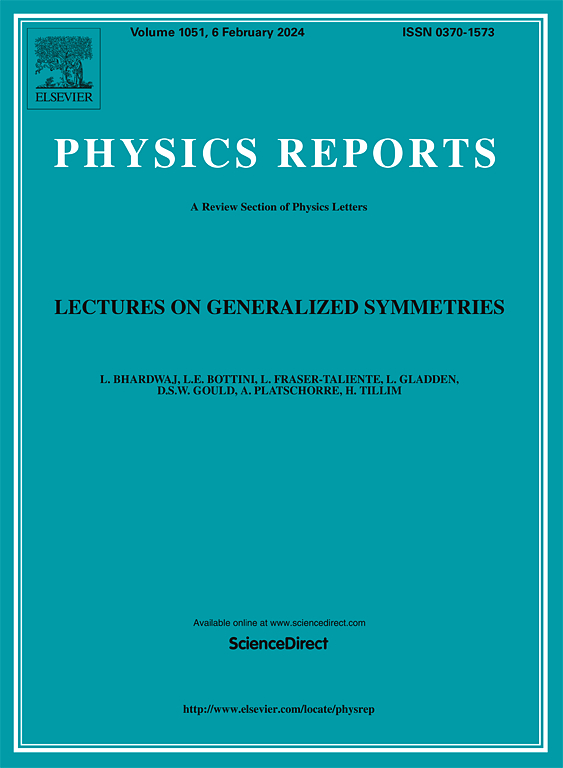老龄化的网络模型和拓扑结构
IF 29.5
1区 物理与天体物理
Q1 PHYSICS, MULTIDISCIPLINARY
引用次数: 0
摘要
衰老是一个与年龄相关的生理和功能衰退的普遍过程,与人类疾病密切相关。尽管对衰老的分子原因进行了广泛的研究,但人们对衰老如何进行以及衰老与内在和外在因素的关系却知之甚少。衰老是一个复杂的特征,涉及大量相互依存的因素,这些因素像复杂系统一样随着时空尺度的变化而变化。我们开发了一种跨学科形式的统计力学,从实验或临床数据中重建与衰老相关的信息、动态、全向和个性化网络(idopNetworks)。idopNetwork 模型可以揭示基因、蛋白质或代谢物等特定生物实体如何介导衰老的反依赖性(即当前性状值对其先前表达的依赖性),识别不同器官间的时空串扰如何加速或减缓衰老速度,并预测个体的计时年龄与其生物年龄有何不同。我们采用 GLMY 同源理论来剖析衰老网络的拓扑结构和功能,找出影响衰老速度的关键子网络、表面孔洞和立方体空隙。进行衰老研究的理想方法是监测整个生命周期的分子、生理和临床特征。然而,要收集idopNetworks重建所需的数据是不可能的,而且在伦理上也是不允许的。为了克服这一限制,我们在模型中整合了异速缩放定律,从基于人群的横断面研究的静态数据快照中提取动态数据,将模型的实用性扩展到更广泛的队列数据领域。我们通过分析衰老小鼠多个脑区的实验代谢数据集,以及中国肺健康研究中吸烟和不吸烟男性从 20 岁到近百岁老人的肺部横断面生理数据集,展示了该模型如何用于揭示和预测衰老的生物机制。该模型为研究衰老是如何通过内在和外在相互作用发生的开辟了新天地,并可作为一种通用工具,利用各种类型的分子、表型或临床数据来揭示人类衰老。本文章由计算机程序翻译,如有差异,请以英文原文为准。
Network modeling and topology of aging
Aging is a universal process of age-dependent physiological and functional declines that are strongly associated with human diseases. Despite extensive studies of the molecular causes of aging, little is known about the overall landscape of how aging proceeds and how it is related with intrinsic and extrinsic agents. Aging is a complex trait involving a large number of interdependent factors that change over spatiotemporal scales like a complex system. We develop an interdisciplinary form of statistical mechanics to reconstruct aging-related informative, dynamic, omnidirectional, and personalized networks (idopNetworks) from experimental or clinical data. The idopNetwork model can reveal how a specific biological entity, such as genes, proteins, or metabolites, mediates the antedependence of aging (i.e., the dependence of current trait values on their previous expression), identify how spatiotemporal crosstalk across different organs accelerate or decelerate the rate of aging, and predict how an individual’s chronological age differs from his biological age. We implement GLMY homology theory to dissect the topological architecture and function of aging networks, identifying key subnetworks, surface holes and cubic voids that shape the rate of aging. Aging studies can be ideally conducted by monitoring molecular, physiological, and clinical traits over the full lifecycle. However, it is both impossible and ethically impermissible to collect the kind of data from which idopNetworks are reconstructed. To overcome this limitation, we integrate an allometric scaling law into the model to extract dynamics from snapshots of static data from a population-based cross-sectional study, expanding the utility of the model to a broader domain of cohort data. We show how this model can be used to unravel and predict the biological mechanisms underlying aging by analyzing an experimental metabolic data set of multiple brain regions in the aging mouse and a cross-sectional physiological data set of the lung for smoking and nonsmoking males aged from 20 years to nearly centenarians from the China Pulmonary Health Study. The model opens up a new horizon for studying how aging occurs through intrinsic and extrinsic interactions and could be used as a generic tool to disentangle human aging using various types of molecular, phenotypic or clinical data.
求助全文
通过发布文献求助,成功后即可免费获取论文全文。
去求助
来源期刊

Physics Reports
物理-物理:综合
CiteScore
56.10
自引率
0.70%
发文量
102
审稿时长
9.1 weeks
期刊介绍:
Physics Reports keeps the active physicist up-to-date on developments in a wide range of topics by publishing timely reviews which are more extensive than just literature surveys but normally less than a full monograph. Each report deals with one specific subject and is generally published in a separate volume. These reviews are specialist in nature but contain enough introductory material to make the main points intelligible to a non-specialist. The reader will not only be able to distinguish important developments and trends in physics but will also find a sufficient number of references to the original literature.
 求助内容:
求助内容: 应助结果提醒方式:
应助结果提醒方式:


